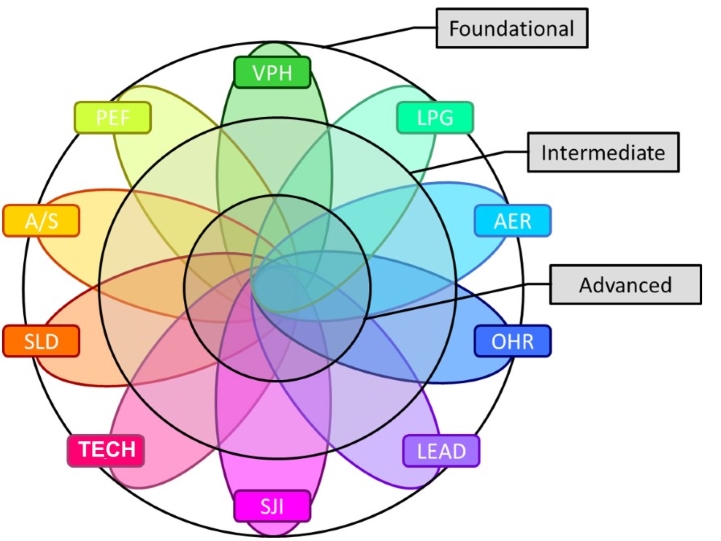Think Big: Broaden your AER Reach
Supporting the Profession Student Affairs Partnering with Academic Affairs AVP or "Number Two" Faculty Graduate Mid-Level New Professional Senior Level VP for Student Affairs
December 2, 2019
This month on the SAPAA blog, we’d like to make the blog an active conversation, applying a practitioner-approach to the NASPA competency for student affairs practitioners on Assessment, Evaluation and Research (or AER). As you know, the ten NASPA competencies are interconnected areas of knowledge, skills and dispositions to help guide your professional development.

Let’s first refresh ourselves on this competency, shall we? The AER competency begins with “the ability to design, conduct, critique, and use various AER methodologies.” The competency gives us a clear road map to measure our development from foundational skills to advanced practice (see graphic). We begin with basic understanding and applying AER to single programs, then, as our professional skills grow, we are expected to study broader applications across departments and divisions, and eventually across institutions. We are encouraged to not only “utilize AER processes and their results to inform practice” but, on a larger scale, “to shape the political and ethical climate surrounding AER processes and uses in higher education.”
For me, a powerful example of paying attention to AER practices that led to broader change—even a paradigm shift-- is the assessment work outlined by Estela Mara Bensimon (2007) in “The Underestimated Significance of Practitioner Knowledge in the Scholarship on Student Success”. Through attentiveness to the assessment practices around diversity as institutional stakeholders discussed assessment data, the work identified a “blame the students” approach called deficit-mindedness. (For example: “students just don’t apply for financial aid.”). From this work developed an alternative framework, equity-mindedness, and the development of the equity scorecard project, an intervention that has led to greater institutional accountability. This is an ideal example of the largest scale in the NASPA AER competency framework, because this work has shaped the political and ethical climate surrounding AER processes and uses in higher education!
For more information, see also the Center for Urban Education (CUE) at the University of Southern California, on equity and student success.
Join the discussion
Do you have a powerful, larger-scale AER project that inspires you? Or, if you’re newer to AER, how do you develop a “culture of evidence,” in which AER is central to continuous improvement?